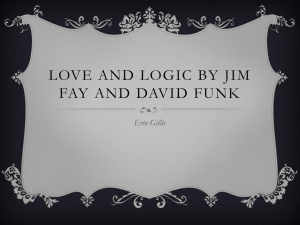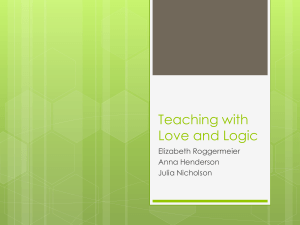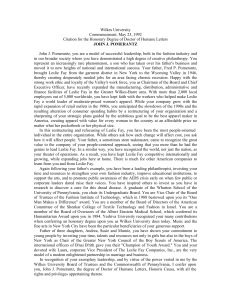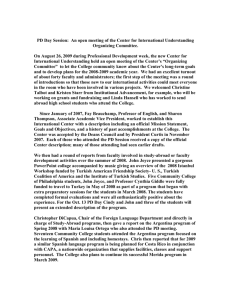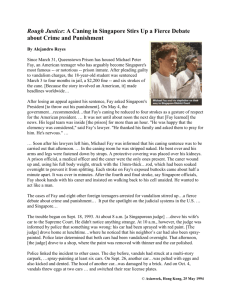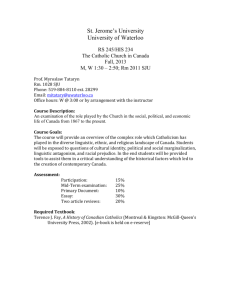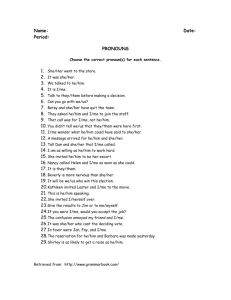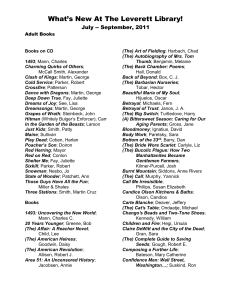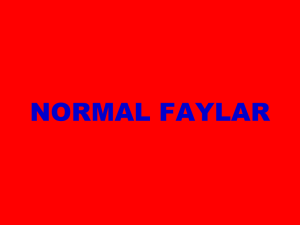Right click to this file
advertisement
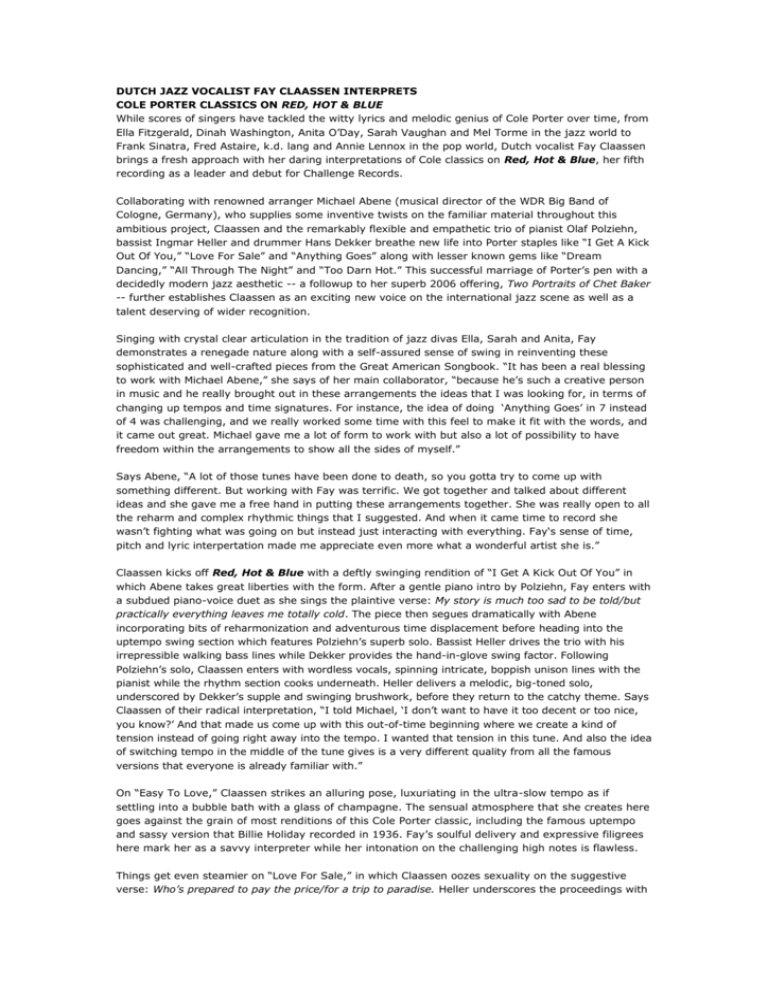
DUTCH JAZZ VOCALIST FAY CLAASSEN INTERPRETS COLE PORTER CLASSICS ON RED, HOT & BLUE While scores of singers have tackled the witty lyrics and melodic genius of Cole Porter over time, from Ella Fitzgerald, Dinah Washington, Anita O’Day, Sarah Vaughan and Mel Torme in the jazz world to Frank Sinatra, Fred Astaire, k.d. lang and Annie Lennox in the pop world, Dutch vocalist Fay Claassen brings a fresh approach with her daring interpretations of Cole classics on Red, Hot & Blue, her fifth recording as a leader and debut for Challenge Records. Collaborating with renowned arranger Michael Abene (musical director of the WDR Big Band of Cologne, Germany), who supplies some inventive twists on the familiar material throughout this ambitious project, Claassen and the remarkably flexible and empathetic trio of pianist Olaf Polziehn, bassist Ingmar Heller and drummer Hans Dekker breathe new life into Porter staples like “I Get A Kick Out Of You,” “Love For Sale” and “Anything Goes” along with lesser known gems like “Dream Dancing,” “All Through The Night” and “Too Darn Hot.” This successful marriage of Porter’s pen with a decidedly modern jazz aesthetic -- a followup to her superb 2006 offering, Two Portraits of Chet Baker -- further establishes Claassen as an exciting new voice on the international jazz scene as well as a talent deserving of wider recognition. Singing with crystal clear articulation in the tradition of jazz divas Ella, Sarah and Anita, Fay demonstrates a renegade nature along with a self-assured sense of swing in reinventing these sophisticated and well-crafted pieces from the Great American Songbook. “It has been a real blessing to work with Michael Abene,” she says of her main collaborator, “because he’s such a creative person in music and he really brought out in these arrangements the ideas that I was looking for, in terms of changing up tempos and time signatures. For instance, the idea of doing ‘Anything Goes’ in 7 instead of 4 was challenging, and we really worked some time with this feel to make it fit with the words, and it came out great. Michael gave me a lot of form to work with but also a lot of possibility to have freedom within the arrangements to show all the sides of myself.” Says Abene, “A lot of those tunes have been done to death, so you gotta try to come up with something different. But working with Fay was terrific. We got together and talked about different ideas and she gave me a free hand in putting these arrangements together. She was really open to all the reharm and complex rhythmic things that I suggested. And when it came time to record she wasn’t fighting what was going on but instead just interacting with everything. Fay‘s sense of time, pitch and lyric interpertation made me appreciate even more what a wonderful artist she is.” Claassen kicks off Red, Hot & Blue with a deftly swinging rendition of “I Get A Kick Out Of You” in which Abene takes great liberties with the form. After a gentle piano intro by Polziehn, Fay enters with a subdued piano-voice duet as she sings the plaintive verse: My story is much too sad to be told/but practically everything leaves me totally cold. The piece then segues dramatically with Abene incorporating bits of reharmonization and adventurous time displacement before heading into the uptempo swing section which features Polziehn’s superb solo. Bassist Heller drives the trio with his irrepressible walking bass lines while Dekker provides the hand-in-glove swing factor. Following Polziehn’s solo, Claassen enters with wordless vocals, spinning intricate, boppish unison lines with the pianist while the rhythm section cooks underneath. Heller delivers a melodic, big-toned solo, underscored by Dekker’s supple and swinging brushwork, before they return to the catchy theme. Says Claassen of their radical interpretation, “I told Michael, ‘I don’t want to have it too decent or too nice, you know?’ And that made us come up with this out-of-time beginning where we create a kind of tension instead of going right away into the tempo. I wanted that tension in this tune. And also the idea of switching tempo in the middle of the tune gives is a very different quality from all the famous versions that everyone is already familiar with.” On “Easy To Love,” Claassen strikes an alluring pose, luxuriating in the ultra-slow tempo as if settling into a bubble bath with a glass of champagne. The sensual atmosphere that she creates here goes against the grain of most renditions of this Cole Porter classic, including the famous uptempo and sassy version that Billie Holiday recorded in 1936. Fay’s soulful delivery and expressive filigrees here mark her as a savvy interpreter while her intonation on the challenging high notes is flawless. Things get even steamier on “Love For Sale,” in which Claassen oozes sexuality on the suggestive verse: Who’s prepared to pay the price/for a trip to paradise. Heller underscores the proceedings with a buoyant, “All Blues”-ish bass line as Fay testifies with bluesy authority on her expressive reading. “This was actually for me an ode to Shirley Horn,” she say. “Actually the whole idea is taken from her recording of this tune (from 1963’s Loads of Love on Mercury). I thought it was such a fantastic feel and idea to do it very slowly. I had actually recorded a fast version of this song on my big band CD (2003’s Specially Arranged For Fay with the Millennium Jazz Orchestra). But this time I really took over Shirley’s idea of doing it slow, which was quite difficult in the beginning. To have all the space and to fill that with your ideas and feelings while still conveying the meaning of the words is very challenging for a singer. So that had to develop slowly, to think in this way about the tune.” A provocative reworking of “Riding High,” which is underscored by driving dissonance and modern reharmonizations of the theme, includes some freewheeling wordless vocals from Claassen and a spikey piano solo from Polziehn. “I like to sing improvisations and also always not in the same way,” says Fay. “The tempo here is up, like the Ella Fitzgerald version I remember (from 1956’s Sings The Cole Porter Song Book on Verve). We changed the groove into an uptime Latin with this exciting bass line underneath the melody. Now it could’ve been a new written piece for me. I also really like the lyrics. Porter’s way of saying things in very short words or shapes is really like modern poetry.” On a faithful rendition of the romantic ballad “Dream Dancing,” Fay makes effective use of relaxed, behind-the-beat phrasing. “It’s a tune that I learned from Barry Harris,” she explains. “He came nine years in a row to our Conservatory in The Hague to teach for one week, and he always brought nice songs to teach us, and we always learned some solos on the spot. This was one of the tunes that he taught me. Heller is featured once again, this time playing strict unisons and harmony lines with Claassen’s wordless vocals. A confident and creative scat singer, Fay breaks loose for an Ella-inspired romp here and Dekker adds some cool brushwork at the tag of this clever interpretation. Their off-kilter rendition of “Anything Goes” is full of surprises. Indeed, the title of the song is almost a declaration of intent by all the musicians here. From a jumpy, staccato, reharmonized head in 7/4 time, the piece segues to a swinging section that has Polziehn stretching heroically (dropping in a quote from “Holiday For Strings” along the way). Claassen negotiates Porter’s mouthful of lyrics in the odd time signature with masterful aplomb. “Actually it had to grow on me a little bit because at first I was counting and feeling completely in a corset with this form,” she admits. “But as it gets more comfortable you begin to do it by feeling and you can get much more free with it. What I also like is that we give a different kind of energy to the tune, which is normally given a sweet interpretation or very naive feeling. But we bring in some kind of tension and give it an edgier quality.” Her interpretation was inspired by Mel Torme’s version from 1962’s Mel Torme At The Red Hill on Atlantic Records. On an abstract rendition of “You’d Be So Nice To Come Home To,” Fay doesn’t even address the lyrics until near the end of the piece. This hard driving swinger is paced by the indelibly tight rhythm tandem of Heller and Dekker, who provide the kinetic pulse beneath Polziehn’s and Claassen’s boppish unisons. Following a wordless vocal solo by Fay and a wonderful piano solo by Olaf, Claassen engages in some spirited scatting exchanges with the drummer before returning to the familiar head. “This idea of singing instrumentally is something that I experimented with on Two Portraits of Chet Baker,” says Fay, “and I wanted to get a little bit of that instrumental thing on this record.” Adds Abene, “That was the first chart I wrote for the Carnegie Hall Jazz Band about 15 years ago. Fay had heard the arrangement when I played it with the WDR Big Band and she said to me, ‘Boy, I’d really like to do that line.’ So I wrote the line out in her key and basically reworked the chart for her, and she sounded great doing it. It’s a hard one to sing but she’s really good at that kind of a vocalese thing.” A melancholy, brooding rendition of “I Concentrate On You” features more clever reharmonizations and rhythmic reconstructions from Abene while Fay’s emotive reading of the torch song “All Through The Night” recalls Jimmy Scott’s dramatic tone and clear delivery. The effervescent swinger “Too Darn Hot” is Claassen’s tribute to Mel Torme,” inspired by the Velvet Fog’s 1960 recording Mel Torme Swings Shubert Alley with the Marty Paich Dek-tette. Says Abene, “That is a very wordy tune and a hard one to sing. Fay and I both loved that Mel Torme version with Marty Paich but it’s a hard piece to adapt for the trio, probably the trickiest one on the record to arrange, especially at that tempo. But they did a great job on it.” Dekker provides some slick drum fills upfront on this jaunty Broadway show tune from Kiss Me Kate. Heller again ignites the track with his imposing Niels-Henning Orsted Pedersen-like bass groove and he also solos with conviction against Dekker’s sizzling brushwork. Polziehn unleashes a burning solo of his own while Fay bursts forth with more Ellaesque scatting. The final track, “So In Love,” is something different. Arranger Abene makes an appearance on piano on this sparse, introspective and wholly spontaneous rendition of the mournful Cole Porter classic. Claassen’s husband Paul Heller (a member of the WDR Big Band and the brother of bassist Ingmar Heller) contributes some Getzian tenor sax here, interacting organically with Fay’s vocals. “It was the late hours and I still wanted to do something with Michael,” she recalls. “Paul had been with me all the time through the session and this was an opportunity to do something together. We just let this piece develop very spontaneously with Michael on piano and Paul on sax, and it was really nice to have it so open and free. We didn’t speak even about the form or what we would do. We just sat down and started playing.” Abene adds, “We did three versions and each one was a little different than the other. We just winged it without a rehearsal. It was fun to play that way, with no drums and bass to lean on. But Fay has such good time and such a great rhythmic sense that it was just a question of forging ahead.” Abene and Claassen met three years ago in Amsterdam. “We were both doing a summer jazz workshop at the Conservatory there. When I first heard her she sang a duet with this wonderful Dutch guitar player and it absolutely knocked me out. She’s got a great sense of rhythm and such great feeling for lyrics. We met and talked about working together at some point. A couple of guys in the WDR Big Band already knew her and she also sent me some of her CDs to check out. Later on I did a project with Paquito D’Rivera with the WDR Big Band and the symphony orchestra and got her involved in that situation. It was some hard music to sing but she came in and did a grat job. She seemd to welcome the challenge, which was another thing I liked about her too. So we established a working relationship and it kind of evolved from there.” Claassen also seems particularly ecstatic about the contributions of her trio on Red, Hot & Blue. “These musicians are such great players and also wonderful people because they really had to learn a pile of very challenging music for this recording, and they worked with so much respect for the arrangements and with so much energy. I am in a really lucky position to have them involved in this project. It was not just business as usual in the studio for them. It was a real personal working together thing.” She adds, “Sometimes you have a strong feelings for an earlier CD, but I really think this is my best until now. Because I was more involved in the process this time. I chose all the music myself and Michael and I developed everything ourselves. Even though he obviously did all the arrangments, I was much more in it with my ideas for the rhythm and the feels than in previous recordings. So this one is definitely the most rewarding. And I think it’s also still possible to bring this music along further in the live situation. We had our first concert together performing this material and that was, for me, a step further even. So we’ll see where it goes from here.” Bill Milkowski
